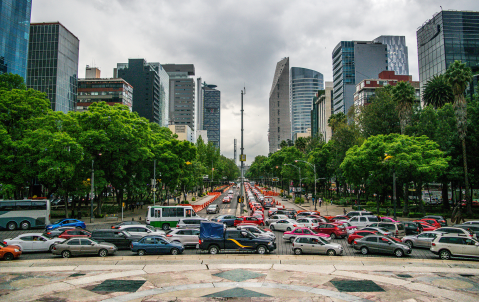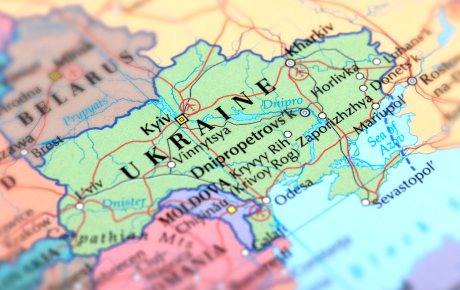
Nearshoring to Latin America: managing the security risk
In April, we published Interest in nearshoring to Latin America grows – a first look at the opportunities and challenges for North American businesses considering Mexico and Latin America as possible nearshoring locations, with a focus on product recall risk. In this follow-up, Hiscox’s Crisis Management team considers the security aspects of nearshoring to the region.
According to Control Risks’ report – The Rise of Nearshoring in Latin America: a spotlight on Mexico – half of Mexico’s 32 states are at a security threat level of red where, “The security environment and/or social conditions present persistent and serious challenges for business; routine business activities generally require enhanced or specialized security provisions.” Mexico doesn’t hold a monopoly on this type of instability in the region either given many countries in Latin America face similar socio-economic and security challenges, which means for those North American businesses considering nearshoring – moving their critical supply chains – to the area, careful consideration must be paid to managing a different security environment than they might have been used to when offshoring to other regions such as Asia.
“When it comes to security issues,” says Hiscox London Market’s Charlotte Piller – Terrorism Underwriter, “the risks in Mexico and Latin America are less about terrorism and more about strikes, riots, and civil commotion (SRCC), as well as kidnap and ransom, and political risks such as asset confiscation. There are many instances of foreign businesses in the region being impacted by instances of blockades or political protests; incidents which might not have necessarily led to physical damage to the business’s property but have seriously disrupted operations.”
“When it comes to security issues,” says Hiscox London Market’s Charlotte Piller – Terrorism Underwriter, “the risks in Mexico and Latin America are less about terrorism and more about strikes, riots, and civil commotion (SRCC), as well as kidnap and ransom, and political risks such as asset confiscation..."
Political violence on the rise
From 2018 to 2021 political violence incidents increased in Latin America by 10% according to ACLED (the Armed Conflict Location & Event Data Project). In the latest figures for April 2023, ACLED further reports that there were 49 incidents of political violence and demonstrations across the region. In Colombia, for example, one incident involved armed groups who “continue to fight for control of illicit economies” killing “at least 18 social leaders”. While ACLED further details the killing of environmental activists in Mexico in April.
Such is the level of SRCC activity, a recent report by brokers Howden – A world of Trouble – suggests that the “Increased frequency of severity has propelled the quantum of SRCC claims in certain territories (such as South Africa and Latin America) to rival or even surpass natural catastrophe losses.” And for kidnap and ransom risk, the statistics aren’t much better with Control Risks’ Eduardo Arco stating: “During 2022, Control Risks recorded double-digit increases of 37% in Colombia and 13% in Brazil, as well as the highest number of kidnap cases in Chile in a decade.”
“The security statistics paint a challenging picture for foreign investors who may not be closely aware of the operating environment in Latin America and how things can quickly change from a security perspective,” says Hiscox’s Piller. It’s a situation that is in stark contrast to areas where a US business may have previously offshored its operations. “In Mexico, for example, there are elections every six years, but in other territories there may not be the same opportunity for politically related turbulence that can happen across Latin America,” says Napoleon Montes-Amaya – Head of Hiscox Crisis Management, Miami. And a business will find it’s faced with very different stakeholders, Montes-Amaya adds, including local cartels, unions, as well as political leaders.
“In Mexico, for example, there are elections every six years, but in other territories there may not be the same opportunity for politically related turbulence that can happen across Latin America,” says Napoleon Montes-Amaya – Head of Hiscox Crisis Management, Miami.
Working with the community
These are all reasons why, when thinking about the security of their assets and people, businesses need to adopt a different strategy to nearshoring operations to Latin America than they might have done when offshoring further away. Community activity represents a key part of that strategy. “When companies move operations to Latin America, many get involved with positive change in the local community, whether through employment of local people, building infrastructure like roads, schools, hospitals or providing access to cleaner water. Investing in this way might not have been necessary when offshoring to other geographies, but in Latin America it can pay dividends,” says Piller, adding that insurers will look more favourably at a risk where there is a clear approach to corporate social responsibility than a business that does little to engage with the local community.
“Local investment has a positive effect on communities. Rather than pay a tax that the local community doesn’t see, foreign investors can provide infrastructure or support that directly benefits the local community and improves the tangible link between the company and the community. And, the more a company benefits the local community, the less chance the community will want to disrupt that organisation’s activities through strikes or blockades,” says Piller.
Extortion risk
The community route, though, doesn’t necessarily mean a business can still escape possible risks like extortion, says Angie Tijerino – Hiscox Crisis Management’s Business Development Manager for K&R Latin America. “A business might still be dealing with cartels who tell them to build a road or other infrastructure which might not be a monetary extortion but they could still demand money, making it a grey area.”
The community route, though, doesn’t necessarily mean a business can still escape possible risks like extortion, says Angie Tijerino – Hiscox Crisis Management’s Business Development Manager for K&R Latin America.
Taking precautions
Which raises the issue of other precautions a business nearshoring in Latin America can take to minimise the threat from SRCC disruption or kidnap and ransom related crimes. “Having a risk manager in place can help to make sure the appropriate mitigations are in place. We’ve seen those businesses who don’t have a risk manager, really run into trouble. While working with a crisis management advisor like Control Risks to help explore what is going on in the area they’re thinking of moving to and the potential risks, is also vital,” says Tijerino.
Insurance protection
From an insurance perspective, says Montes-Amaya, in countries like Mexico, clients are buying K&R cover as well as political violence protection. “In the case of extortion, for example, K&R helps with the initial crisis management, but the moment it goes from an extortion to an actual incident such as a factory being burnt down as criminals carry out their threat, then political violence cover steps in. If a business can buy both policies, it’s much easier because one starts where the other one finishes.”
It can be part of an overall risk management approach concludes Montes-Amaya, that means even though investing in Latin America has security risks for businesses looking to nearshore, they’re usually “manageable risks”, provided businesses are prepared to invest in the local communities and take the right precautions to secure their physical assets and keep their employees safe.





